
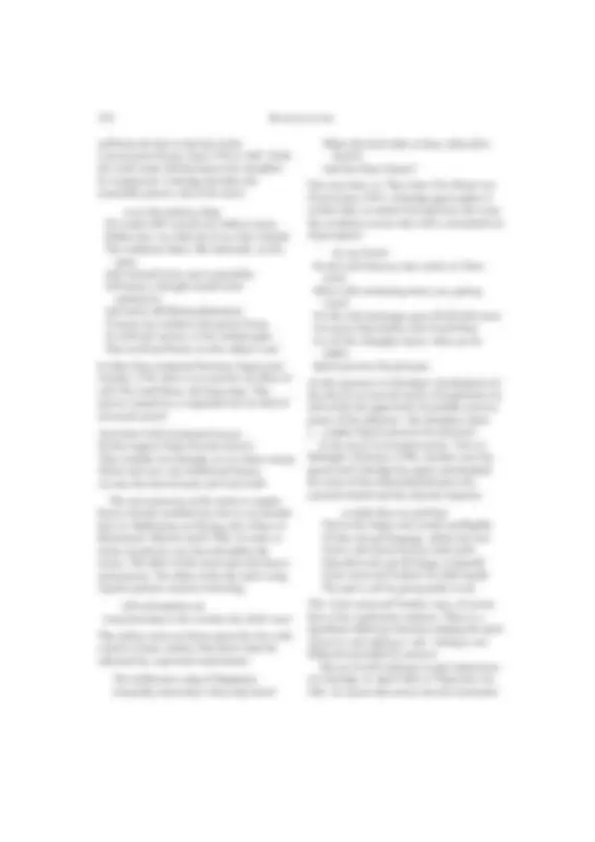
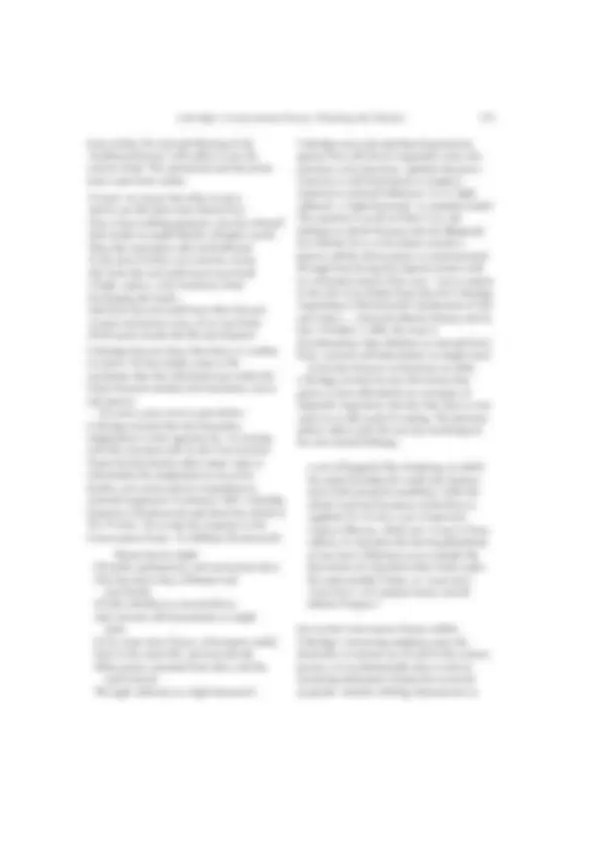
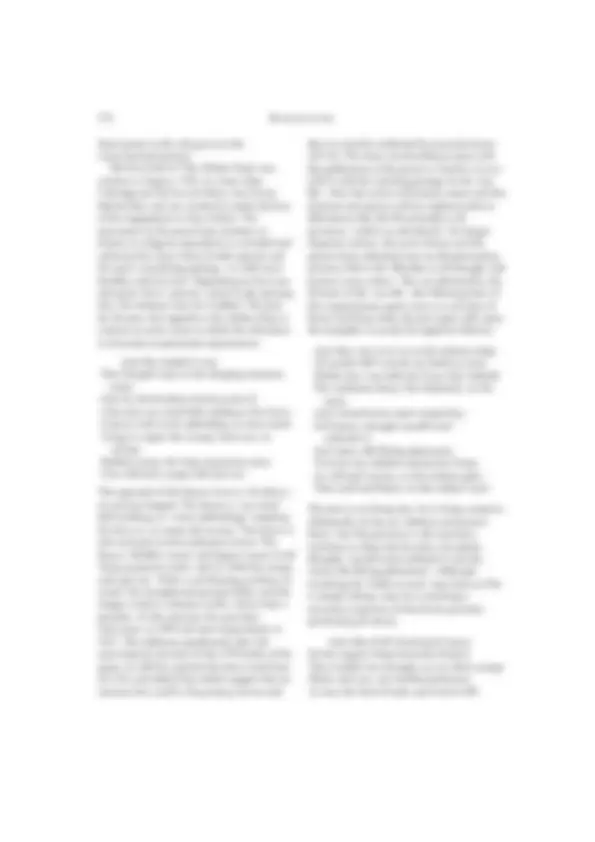

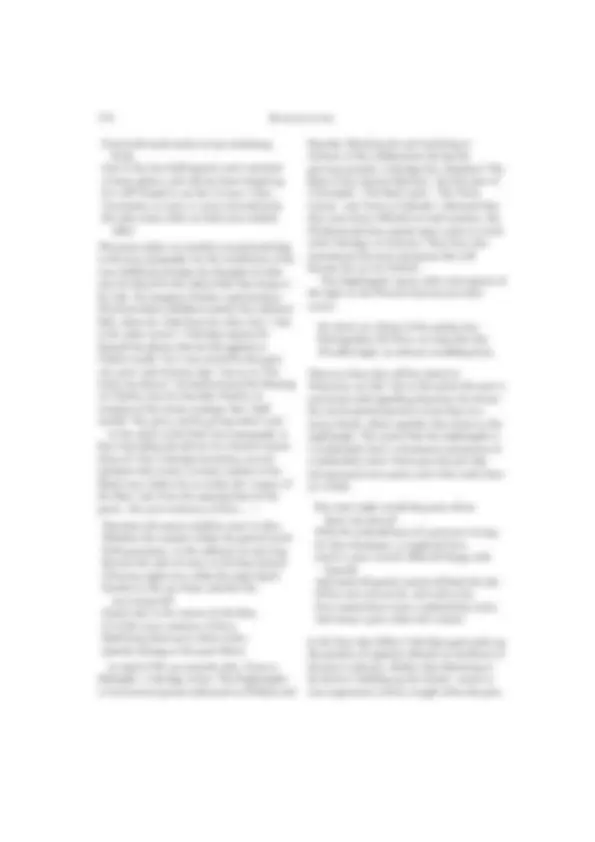
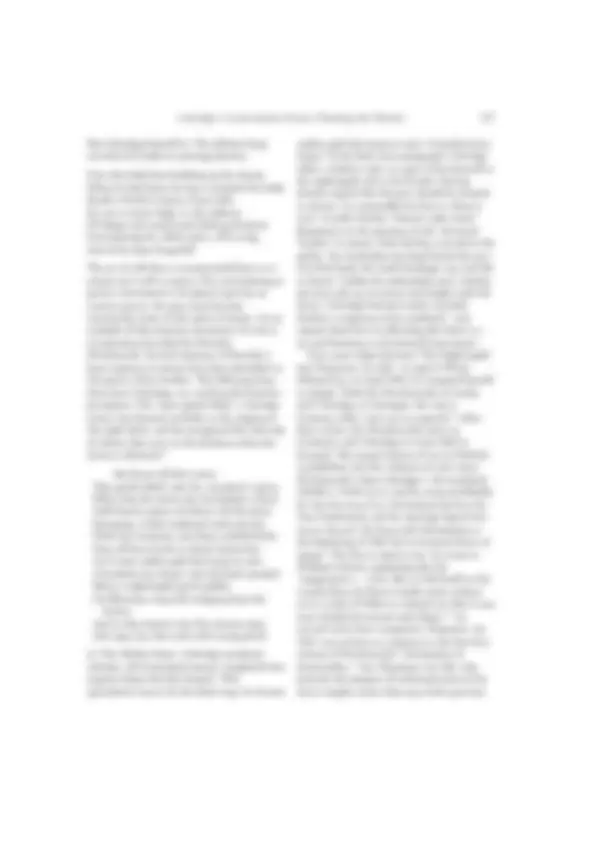

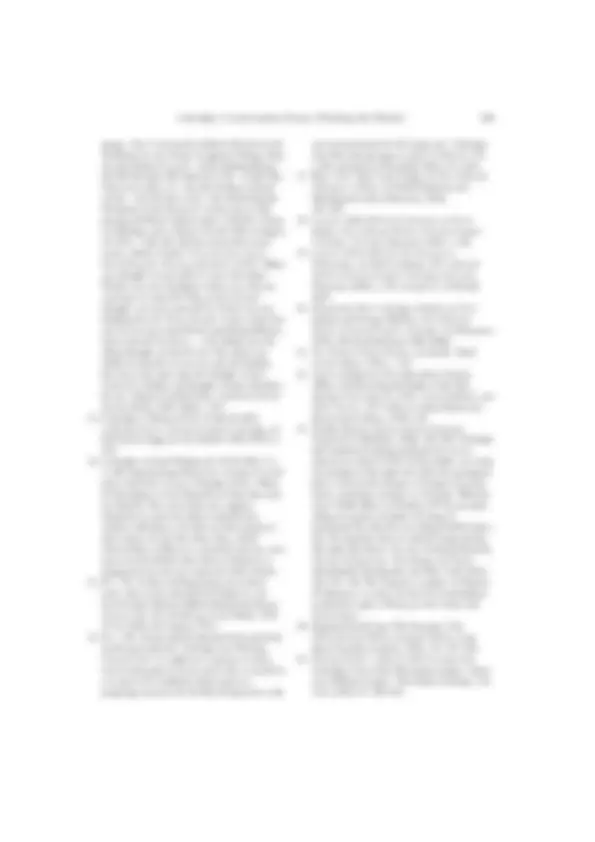



Study with the several resources on Docsity

Earn points by helping other students or get them with a premium plan


Prepare for your exams
Study with the several resources on Docsity

Earn points to download
Earn points by helping other students or get them with a premium plan
Community
Ask the community for help and clear up your study doubts
Discover the best universities in your country according to Docsity users
Free resources
Download our free guides on studying techniques, anxiety management strategies, and thesis advice from Docsity tutors
This document delves into the analysis of Coleridge's 'Conversation Poems', a collection of works that have been grouped together due to their shared characteristics. Critics have identified poems such as 'The Nightingale', 'The Æolian Harp', and 'Frost at Midnight' as conversation poems, and have explored their themes of perception, inspiration, and the relationship between the thinker and the thing perceived. The document also discusses Coleridge's evolving thoughts on the role of external influences and free will in the creative process.
Typology: Schemes and Mind Maps
1 / 15

This page cannot be seen from the preview
Don't miss anything!










Although Coleridge himself identified only ‘The Nightingale’ as ‘A Conversation Poem’, the assumption that it possessed certain generic or thematic characteristics in common with other poems has prompted critics for the past eighty years to group them together. ‘The Æolian Harp’, ‘Reflections on having left a Place of Retirement’, ‘This Lime-Tree Bower’, ‘Frost at Midnight’, ‘The Nightingale’, ‘Dejection: An Ode’, ‘To William Wordsworth’ were the seven poems said to share basic features.^1 The first to set forth these shared characteristics, George Harper emphasised a structure which began in a pleasant sanctuary, launched a metaphorical flight of fancy, then returned with altered perspective to the sanctuary. 2 Richard Fogle noted recurrent image patterns in the seven poems. 3 M. H. Abrams called attention to the poetic expression of Coleridge’s key metaphysical ideas. 4 Other critics saw the poems as meditations and religious reflections inspired by a revelatory experience or harmony in nature. 5 With a focus on the presumed interlocutor in the ‘Conversation’, critics have also made a case for the conjured presence in these poems of Sara Fricker Coleridge, Charles Lamb, Hartley Coleridge, Sara Hutchinson, and William and Dorothy Wordsworth. 6 Others have examined the stylistic presumptions of conversational language.^7 Still other critics have attended to political concerns, perhaps most prominent in
‘Reflections on having left a Place of Retirement’, but also lurking in ‘Frost at Midnight’ and some of the other ‘Conversations.’^8 Many critics have observed strong dialectical tensions: aesthetics vs. ethics, idealism vs. materialism, isolation vs. engagement, idleness vs. industry, loss vs. desire, indolence vs. creativity.^9 My own reading of the ‘Conversation Poems’ is also concerned with dialectical tensions, those derived from Coleridge’s effort to reconcile subject and object, thinker and thing perceived. In his distinction between the Primary and the Secondary Imagination, Coleridge addressed the mental act necessary to apperception and the volitional act necessary to creative expression. 10 The peculiarity of Coleridge’s definition is that he has divided the Imagination into two modes, a receptive phase of perception followed by an expressive phase of recreation. The Primary is ‘the living Power and prime Agent of all human Perception [... ] a repetition in the finite mind of the eternal act of creation in the infinite I am’. The Secondary is ‘an echo of the former, co-existing with the conscious will, yet still as identical with former in the kind of its agency, and different only in degree, and in the mode of its operation’ ( BL , i. 304). There is a parallel in the two phases that Wordsworth attributes to the generation of poetry: ‘spontaneous overflow of powerful feelings’ and ‘emotions recollected in
Coleridge’s Conversation Poems : Thinking the Thinker 169
tranquillity’. It is in the latter phase, Wordsworth explains, that ‘successful composition generally begins.’ 11 For Wordsworth the inspirational moment is emotional, for Coleridge it is an epiphany of perception. In spite of the differences, these descriptions of the creative process are similar in positing two distinct stages: the first based in response, the second involving the active work of composition. ‘Co-existing with conscious will’, the second phase for Coleridge ‘dissolves, diffuses, dissipates, in order to recreate’. Wordsworth does not make an act of will decisive for the transition from the first phase to the second; he merely observes that if the ‘passions [... ] are voluntarily described, the mind will, upon the whole, be in a state of enjoyment.’ Wordsworth, in ‘Lines written a few miles above Tintern Abbey’, described a dreamlike state in which
we are laid asleep In body, and become a living soul: While with an eye made quiet by the power Of harmony, and the deep power of joy, We see into the life of things (lines 45–49)
In his gloss on these lines in March 1801, Coleridge cited Fichte in elucidating his own sense of how inspired perception depends on perception as apperception. To see ‘into the Life of things’, Coleridge asserted, we must see into ourselves, that is, we must recognise ourselves as ‘the thinking Being’ in the act of beholding. 12 This act of double consciousness, thinking the thinker, provides a crucial turn in the Conversation poems. On 23 March 1801, Coleridge rejected the philosophical materialism of Locke or Newton for describing the mind as ‘always passive – a lazy Looker-on .’ 13 Just a month earlier, on 24 February 1801, Coleridge had taken up the same question of the apparent presence or absence of the will in acts of perception. 14 If the world is not to appear blank and static, then our
own sentient activity must witness the motion it gives away to the things beheld. Coleridge, it will be recalled, described this giving away of motion in his dynamic metaphor of the clouds and the stars in ‘Dejection: An Ode’ (lines 31–32). In Chapter 5 of the Biographia Literaria , Coleridge commenced his account of the law of association with the fundamental principle that in proposing their ‘own nature as a problem’, philosophers constructed ‘a table of distinctions’ based on ‘the absence or presence of the will’. The difficulty in discriminating ‘between the voluntary and the spontaneous’, is that ‘we seem to ourselves merely passive to an external power’. Coleridge was reluctant to concede that in the act of perception the mind is merely ‘a mirror reflecting the landscape’. Granting that ‘sometimes our nature seemed to act by a mechanism of its own, without any conscious effort of the will’, Coleridge nevertheless endeavored to identify deliberative choices informing any act of seeing ( BL , i. 89–91). In this same chapter, he introduced from Juan Luis (Ludovicus Vives) the distinction between active and passive perception, the former involving ‘the mental power of comprehension’ and the latter the mere ‘receptivity of impressions’ ( BL , i. 99).^15 Coleridge’s counter argument is that choices are made with such frequency and rapidity, that we are not fully aware of our split-second decisions. In addition, we forget our volitional determination of the act, because our attention is focused on the object of the action. Some modes of perception, however, are volitionally directed by fully alert and conscious mental engagement. This, he asserts in Chapter 12, is the prerequisite for ‘the philosophic imagination, the sacred power of self-intuition’ ( BL , i. 241).^16 The act of the will was pivotal of Coleridge, and it had become so long before he identified its necessary role in the transition from the Primary to the Secondary Imagination. Indeed, one can trace the increasing importance of the
Coleridge’s Conversation Poems : Thinking the Thinker 171
from within. No external blowing of the ‘intellectual breeze’ will suffice to stir the creative mind. The motivation and the action must come from within.
O Lady! we receive but what we give, And in our life alone does Nature live: Ours is her wedding-garment, ours her shroud! And would we aught behold, of higher worth, Than that inanimate cold world allowed To the poor loveless ever-anxious crowd, Ah! from the soul itself must issue forth A light, a glory, a fair luminous cloud Enveloping the Earth– And from the soul itself must there be sent A sweet and potent voice, of its own birth, Of all sweet sounds the life and element!
Coleridge does not deny that there is a vitality in nature. He has simply come to the conclusion that the individual must make the choice between animate and inanimate, active and passive. Ten more years were to pass before Coleridge insisted that the Secondary Imagination is only operative by ‘co-existing with the conscious will. In the Conversation Poems he had already taken major steps to reformulate the imagination as an active faculty, not a mere passive respondent to external inspiration. In January 1807, Coleridge listened to Wordsworth read aloud the whole of The Prelude. He records his response in the Conversation Poem, ‘To William Wordsworth’:
Theme hard as high! Of smiles spontaneous, and mysterious fears (The first-born they of Reason and twin-birth), Of tides obedient to external force, And currents self-determined, as might seem, Or by some inner Power; of moments awful, Now in thy inner life, and now abroad, When power streamed from thee, and thy soul received The light reflected, as a light bestowed–
Coleridge never pits absolute determinism against free will, but he repeatedly raises the question, as he does here, whether the poet’s creativity is self-determined or simply a response to external influences. Is it a ‘light reflected’, a ‘light bestowed’, or somehow both? The question is as old as Plato’s Ion , the dialogue in which Socrates asks the Rhapsode Ion whether he is, as he claims, merely a passive vehicle whose poetry is communicated through him during his inspired trances with no volitional control of his own.^17 Ion is content in the role of an Æolian harp. But for Coleridge, responding to Wordsworth’s declaration of ‘fair seed-time [... ] fostered alike by Beauty and by Fear’ (Prelude, I. 200), the issue is discriminating ‘tides obedient to external force’ from ‘currents self-determined, as might seem’. In his first lectures on literature in 1808, Coleridge scorned not just the notion that poetry is born effortlessly in a moment of rhapsodic inspiration, but also that there is any value in an idle mode of reading. The bad poet infects others with the nervous twitchings of his own mental lethargy,
a sort of beggarly Day-dreaming, in which the mind furnishes for itself only laziness and a little mawkish sensibility, while the whole Stuff and Furniture of the Doze is supplied ab extra by a sort of spiritual Camera Obscura, which ( pro tempore ) fixes, reflects, & transmits the moving phantasms of one man’s Delirium so as to people the barrenness of a hundred other trains under the same morbid Trance, or ‘s uspended Animation ’, of Common Sense, and all definite Purpose.^18
Just as the Conversation Poems exhibit Coleridge’s increasing emphasis upon the decisively co-existent act of will in the creative process, so too thematically they reveal an increasing indictment of passivity as moral turpitude. Another shifting characteristic in
172 Romanticism
these poems is the role given to the conversational partner. The first draft of ‘The Æolian Harp’ was written in August, 1795, at a time when Coleridge put his love for Mary Ann Evans behind him, and was resolved to make the best of his engagement to Sara Fricker. The movement in the poem from intimacy to fantasy to religious speculation is curtailed and redirected by Sara’s look of mild reproof, and the poet’s concluding apology, ‘to walk more humbly with his God’. Depending on how one interprets Sara’s ‘pensive’ mood in the opening line, the intimacy may be troubled. The poet, for his part, first appeals to the Æolian harp to conjure an erotic scene in which the reluctance is overcome in passionate acquiescence:
And that simplest Lute, Plac’d length-ways in the clasping casement, hark! How by the desultory breeze caress’d, Like some coy maid half-yielding to her lover, It pours such sweet upbraiding, as must needs Tempt to repeat the wrong! And now, its strings Boldlier swept, the long sequacious notes Over delicious surges sink and rise
The approach of the breeze-lover is ‘desultory’, its caresses languid. The harp is a ‘coy-maid half-yielding, its ‘sweet upbraidings’ tempting the lover to ‘to repeat the wrong’. The breeze is now aroused to more audacious action. The harp is ‘Boldlier swept’ and begins to pour forth ‘long sequacious notes’ and its ‘delicious surges sink and rise’. With ‘a soft floating witchery of sound’ the metaphorical ground shifts, and the images conjure a fantasy world, a fairy land, a paradise. At this juncture the poet later intervenes, in 1803 and more importantly in
that it is merely awakened by external nature (30–33). The more crucial addition came with the publication of the poem in Sibylline Leaves (1817) with the stunning passage on the ‘one life’. Here the notion of dynamic nature and the dormant and passive self are replaced with an affirmation that the life principle is all pervasive, ‘within us and abroad’. No longer disparate entities, the active breeze and the passive harp subsumed into an all-penetrating presence that is the ‘Rhythm in all thought, and joyance every where’. Not yet informed by the doctrine of the ‘one life’, the following lines of the original poem again resort to a division of breeze and harp when the poet again calls upon the metaphor to justify his apparent idleness:
And thus, my Love! as on the midway slope Of yonder hill I stretch my limbs at noon, Whilst thro’ my half-clos’d eye-lids I behold The sunbeams dance, like diamonds, on the main, And tranquil muse upon tranquility; Full many a thought uncall’d and undetain’d, And many idle flitting phantasies, Traverse my indolent and passive brain, As wild and various, as the random gales That swell and flutter on this subject Lute!
The poet is not being lazy: he is being receptive. Admittedly, he has an ‘indolent and passive brain’, but that passivity is the necessary condition to allow the free play of random thoughts ‘uncall’d and undetain’d’ and the ‘many idle flitting phantasies’. Although stretching his ‘limbs at noon’ may look as if he is simply taking a nap, he is attaining a conscious awareness of the divine presence permeating all nature.
And what if all of animated nature Be but organic Harps diversely framed, That tremble into thought, as o’er them sweeps Plastic and vast, one intellectual breeze, At once the Soul of each, and God of All?
174 Romanticism
Coleridge and Sara to stay with him in Nether Stowey. The Coleridges also stay in Darley, where he had hopes for a position as tutor. On September 19, his son Hartley is born; on September 22, Coleridge’s long-time friend Charles Lamb discovers that his sister has killed their mother in a fit of insanity. Coleridge takes on Charles Lloyd as a private pupil. Lamb, Lloyd and Coleridge collaborate on Sonnets by Various Authors (October 1796). In December, Thomas Poole purchases at cottage for the Coleridges adjacent to his own property on Nether Stowey. He commences his friendship with Wordsworth. In June, 1797, William and Dorothy Wordsworth, Charles Lamb and Charles Lloyd have all gathered in Nether Stowey. Together they set out to see the waterfall near Alfoxden, but Coleridge is forced to stay behind because Sara has accidentally scalded his foot. This, of course, is the occasion for ‘This Lime-Tree Bower my Prison.’ There is no pleasant sanctuary described in the opening lines, only the resignation that he is forced to stay behind and the exaggerated lament that may never see his friends again:
Well, they are gone, and here must I remain, This lime-tree bower my prison! I have lost Beauties and feelings, such as would have been Most sweet to my remembrance even when age Had dimm’d mine eyes to blindness! They, meanwhile, Friends, whom I never more may meet again, On springy heath, along the hill-top edge, Wander in gladness, and wind down, perchance, To that still roaring dell, of which I told.
The dramatic gesture of self-pity enables Coleridge to elide the real tragedy that Charles Lamb has just confronted. The first verse paragraph continues with the poet visualising the familiar sights that he know his friends will
be seeing. In the second verse paragraph he imagines them stepping forth into a broad meadow, and bestows upon Charles Lamb the blessing of the place. Charles will experience, as he has, ‘theAlmighty Spirit, when yet he makes/ Spirits perceive his presence’. Charles is twice referred to as ‘gentle-hearted’, as a ‘sad yet patient soul, ‘ and as one who has won his way ‘through evil and pain /And strange calamity’. Coleridge say of Charles that he was ‘In the great City pent’, In ‘Frost at Midnight’ he applies the same phrase to himself, ‘I was reared/ In the great city, pent ‘mid cloisters dim’. And Wordsworth in the Prelude repeats the phrase in describing Coleridge: ‘Thou, my Friend! Were reared/ In the great City, ‘mid far other scenes’ (II. 466–67).^21 The echoing of voices reinforce the collaborative spirit of their friendship. In the final verse paragraph, Coleridge acknowledges that the lime-tree bower has not been ‘prison’ but a blessed sanctuary, offering its own visual stimulation
Nor in this bower, This little lime-tree bower, have I not mark’d Much that has sooth’d me. Pale beneath the blaze Hung the transparent foliage; and I watch’d Some broad and sunny leaf, and lov’d to see The shadow of the leaf and stem above Dappling its sunshine! Coleridge then affirms, ‘Henceforth I shall know/ That Nature ne’er deserts the wise and pure’. A year later, Wordsworth was to express to Dorothy a similar faith, ‘this prayer I make,/ Knowing that Nature never did betray / The heart that loved her’ (121–123)^22 January 1798 commenced well for Coleridge. He had long been struggling with financial difficulties. Since life as a poet did not promise prosperity, his only alternatives were to choose a career either as a journalist or as a minister. His problems were solved when the Wedgwoods promised him £150 for life so that
Coleridge’s Conversation Poems : Thinking the Thinker 175
he might devote himself to poetry and philosophy. Coleridge at the time had calculated that £100 a year would suffice to maintain himself and his family. As described in ‘Frost at Midnight’, the winter night, February 1798, in his Nether Stowey cottage was a time relative tranquillity. The modulation of the active and passive is nowhere more exquisitely wrought among the Conversation poems than in this poem. ‘Frost at Midnight’ achieves its effect through its minimalism. By insisting upon absolute silence and calm, the slightest activity gains in portent.
The Frost performs its secret ministry, Unhelped by any wind. The owlet’s cry Came loud – and hark, again! loud as before. The inmates of my cottage, all at rest, Have left me to that solitude, which suits Abstruser musings: save that at my side My cradled infant slumbers peacefully. ‘Tis calm indeed! so calm, that it disturbs And vexes meditation with its strange And extreme silentness. Sea, hill, and wood, This populous village! Sea, and hill, and wood, With all the numberless goings-on of life, Inaudible as dreams!
Following the brief disruptive sound of the owlet’s cry at the poem’s opening, all again lapses into silence. Not even a breath of wind stirs the ‘secret ministry’ of the frost. The exterior world, man and nature alike, slumbers in ‘extreme silentness’. The poet is situated in a passive languor, in the midnight hour he habitually reserved for his opium reveries. 23 As the poet sits amidst the silence, his attention is captivated by the ‘sole unquiet thing’:
the thin blue flame Lies on my low-burnt fire, and quivers not; Only that film, which fluttered on the grate, Still flutters there, the sole unquiet thing. Methinks, its motion in this hush of nature Gives it dim sympathies with me who live,
Making it a companionable form, Whose puny flaps and freaks the idling Spirit By its own moods interprets, every where Echo or mirror seeking of itself, And makes a toy of Thought.
Coleridge elsewhere argues, well in advance of Freud, 24 that one projects one’s own moods or feelings onto external nature. He observes this sort of psychological projection in ‘The Nightingale’, and he returns to it again in ‘Constancy to an Ideal Object’. The fluttering ash is animated by the flame, but it seems to mimic the motions of the poet’s mind and thus becomes ‘a companionable form’. The poet’s ‘idling Spirit’ is utterly captivated. Rather than the mind assuming active control over its perception of the ash, the ash dominates and ‘makes a toy of Thought’. With a grand leap of association, the poet is then drawn back into a tormented childhood memory, a time when he was eager to believe that the ash hovering over the flame would ‘portend the arrival of some absent friend.’^25 As a ‘charity boy’ at Christ’s Hospital, he longed to see a visitor from home. Conjuring the memories of childhood gives this Conversation poem its Wordsworthian resonance:
But O! how oft, How oft, at school, with most believing mind, Presageful, have I gazed upon the bars, To watch that fluttering stranger! and as oft With unclosed lids, already had I dreamt Of my sweet birth-place, and the old church-tower, Whose bells, the poor man’s only music, rang From morn to evening, all the hot Fair-day, So sweetly, that they stirred and haunted me With a wild pleasure, falling on mine ear Most like articulate sounds of things to come! So gazed I, till the soothing things, I dreamt, Lulled me to sleep, and sleep prolonged my dreams! And so I brooded all the following morn, Awed by the stern preceptor’s face, mine eye
Coleridge’s Conversation Poems : Thinking the Thinker 177
like Coleridge himself in ‘The Æolian Harp’, stretches his limbs in seeming laziness:
Poet who hath been building up the rhyme When he had better far have stretched his limbs Beside a brook in mossy forest-dell, By sun or moon-light, to the influxes Of shapes and sounds and shifting elements Surrendering his whole spirit, of his song And of his fame forgetful!
The act of will that is recommended here is to attune one’s self to nature. Not surrendering as passive instrument to be played upon by an exterior power, the poet must become consciously aware of the spirit of nature. As an example of that attentive awareness, he cites a circumstance described by Dorothy Wordsworth. Several instances of Dorothy’s keen response to nature have been identified in the poetry of her brother. The following lines show how Coleridge, too, could profit from her perception. This ‘most gentle Maid’, Coleridge writes, has listened carefully to the singing of the night birds, and has recognised the intervals of silence that occur in the darkness when the moon is obscured:^26
she knows all their notes, That gentle Maid! and oft, a moment’s space, What time the moon was lost behind a cloud, Hath heard a pause of silence; till the moon Emerging, a hath awakened earth and sky With one sensation, and those wakeful birds Have all burst forth in choral minstrelsy, As if some sudden gale had swept at once A hundred airy harps! And she hath watched Many a nightingale perch giddily On blossomy twig still swinging from the breeze, And to that motion tune his wanton song Like tipsy Joy that reels with tossing head.
In ‘The Æolian Harp’, Coleridge wondered whether ‘all of animated nature/ [might] Be but organic Harps diversly framed’. That speculation recurs, for the birds sing ‘As if some
sudden gale had swept at once/ A hundred airy harps!’ In the final verse paragraph, Coleridge offers ‘a father’s tale’ as a part of his farewell to the nightingale and to his friends. Having already argued that the poet should be attuned to nature, it is reasonable for him to ‘deem it wise’ to make Hartley ‘Nature’s play-mate’. Responsive to the presence of the ‘universal Teacher’ in nature, little Hartley even alerts the adults: ‘he would place his hand beside his ear,/ His little hand, the small forefinger up, And bid us listen!’ Unlike the melancholy poet, Hartley perceives the joy in nature and laughs with the moon. Coleridge had previously recorded Hartley’s responses in his notebook, 27 and repeats them here in affirming that there is a joy and harmony to be learned from nature. Four years elapse between ‘The Nightingale’ and ‘Dejection: An Ode’. In April 1798 he affirmed joy; in April 1802, he resigned himself to despair. With the Wordsworths in Goslar and Coleridge in Göttingen, the trip to Germany didn’t turn out as expected.^28 After their return, the Wordsworths move to Grasmere, and Coleridge to Greta Hall in Keswick. The second edition of Lyrical Ballads is published, and the volumes are now more Wordsworth’s than Coleridge’s. He translated Schiller’s Wallenstein , and he wrote prolifically for the Morning Post. He declared his love for Sara Hutchinson, and his marriage lapsed into severe discord. His bout with rheumatism at the beginning of 1801 led to increased doses of opium. ‘The Poet is dead in me’, he wrote to William Godwin, explaining that his ‘imagination [... ] lies, like a Cold Snuff on the circular Rim of a Brass Candle-stick, without even a stink of Tallow to remind you that it was once cloathed & mitred with Flame.’^29 As several critics have recognised, ‘Dejection: An Ode’ was written as a response to the first four stanzas of Wordsworth’s ‘Intimations of Immortality,’^30 but ‘Dejection: An Ode’ also presents the impasse of volitional action in far more complex terms than any of the previous
178 Romanticism
Conversation poems. Introduced with lines from the ballad of ‘Sir Patrick Spence’ forewarning that the breeze shall become ‘a deadly storm’, the wind and the harp are once again introduced as symbols of the exterior energy and the individual response:
Well! If the Bard was weather-wise, who made The grand old ballad of Sir Patrick Spence, This night, so tranquil now, will not go hence Unroused by winds, that ply a busier trade Than those which mould yon cloud in lazy flakes, Or the dull sobbing draft, that moans and rakes Upon the strings of this Æolian lute.
Even in this opening lull before the storm, the motifs or idleness and industry begin to turn: the night is ‘tranquil’ and ‘unroused’, the clouds scattered in ‘lazy flakes’, becoming a ‘dull sobbing draft’ that ‘moans’ through the harp. ‘Sobbing’ and ‘moaning’ are not happy sounds, and the mood is about to become more desperate. What was once a creative stimulus has turned destructive. But even a raging storm is more welcome than the persistent dullness of inactivity:
And oh! that even now the gust were swelling, And the slant night-shower driving loud and fast! Those sounds which oft have raised me, whilst they awed, And sent my soul abroad, Might now perhaps their wonted impulse give, Might startle this dull pain, and make it move and live!
In ‘Intimations of Immortality’, Wordsworth laments that he has lost his sense of reciprocity with nature: ‘The things which I have seen I now can see no more’ (l. 9). Coleridge’s declaration that ‘I see, not feel, how beautiful they are’, admits to a similar loss, but one that
reaches deeper into his being: All this long eve, so balmy and serene, Have I been gazing on the western sky, And its peculiar tint of yellow green: And still I gaze – and with how blank an eye! And those thin clouds above, in flakes and bars, That give away their motion to the stars; Those stars, that glide behind them or between, Now sparkling, now bedimmed, but always seen: Yon crescent Moon, as fixed as if it grew In its own cloudless, starless lake of blue; I see them all so excellently fair, I see, not feel, how beautiful they are! That the sense of reciprocity can be only an illusion, Coleridge makes evident in specifying the optical illusion of motion that makes it seems that that thin clouds passing across the night sky ‘give away their motion to the stars.’ 31 In ‘The Nightingale’ Coleridge is not saddened that the Western horizon reveal ‘no long thin slip / Of sullen light, no obscure trembling hues’. Here, even though the phenomenon is visible, it brings no pleasure: he gazes, but ‘with how blank an eye!’ In the stanza that follows, Coleridge explains why the eye is blank:
It were a vain endeavour, Though I should gaze for ever On that green light that lingers in the west: I may not hope from outward forms to win The passion and the life, whose fountains are within. Because his ‘genial spirits’ have failed, he sees only the surface of things, the natura naturata , not the natura naturans. In terms of his later distinction between the Primary and Secondary Imagination, the failure of his ‘genial spirits’ is not just the failure of will to transform
180 Romanticism
Place of Retirement‘, 260–63; ‘This Lime-Tree Bower‘, 349–54; ‘Frost at Midnight’, 452–56; ‘The Nightingale‘, 516–20; (Part 2) ‘Dejection: An Ode’, 695–702; ‘To William Wordsworth‘, 815–19.
Speech Genre’, Semiotics (1995), ed. C. W. Spinks and John Deely (New York, 1996), 242–49; G. S. Morris, ‘Sound, Silence, and Voice in Meditation: Coleridge, Berkeley, and the Conversation Poems’, Christianity and Literature , 55. 1 (2005), 51–71.
Coleridge’s Conversation Poems : Thinking the Thinker 181
image – here. I necessarily think of the Idea & the Thinking I as two distinct & opposite Things. Now (let me) think of myself – of the thinking Being – the Idea becomes dim whatever it be – so dim that I know not what it is – but the Feeling is deep & steady – and still this I call I – the identifying the Percepient & the Perceived’. In her note to this passage, Kathleen Coburn refers to Wollf, to Kant, to Schelling, and to Theses VII and VIII, in chapter 10 of BL , i. 184–185. She has missed the actual source, which is Fichte’s Versuch einer neuen Darstellung der Wissenschaftslehre (1797): ‘When you thought of your table or your wall (deine Wand), you, my intelligent reader, you who are conscious to yourself of the activity of your thought, you were yourself the thinker in your thinking, but the thing-thought-of ( das Gedachte ) was for you not yourself, but something different from yourself. In short [... ] the thinker and the thing-thought-of must be two. But when you think of yourself, you are not only the thinker, but also at the same time the thought-of ( das Gedachte ); thinker and thought-of must therefore be one’. Johann Gottlieb Fichte, Sämtliche Werke (8 vols, Berlin, 1845–1846), i. 522.
eye waits patiently for the rising sun’. Coleridge cited this same passage as early as 1796–97, CN , i. 209; and again in November 1803, CN , 1678.